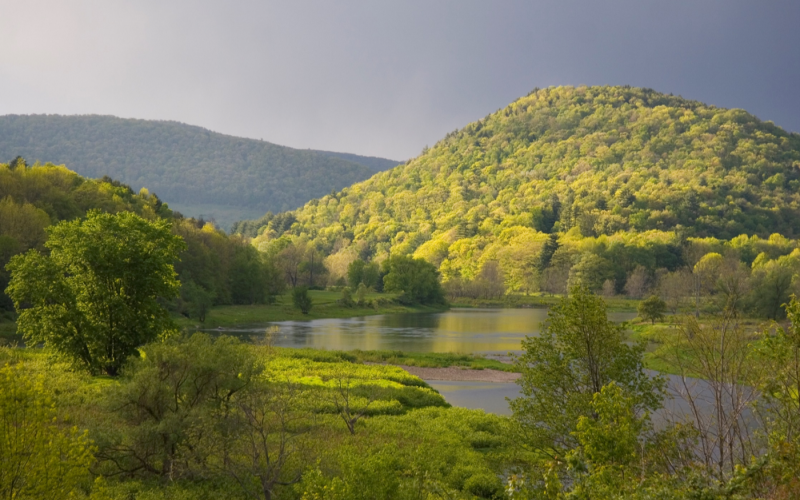
At a time when tackling the climate crisis could not be more critical, President Biden’s Bipartisan Infrastructure Law is a major investment in the conservation and stewardship of America’s public lands that will lead to better outdoor spaces and habitats for people and wildlife for generations to come. This transformational law will build on proven, nature-based projects, programs, and partnerships to protect cherished wildlife and nature resources while creating good-paying union jobs to strengthen communities.
The law’s $1.4 billion for Ecosystem Restoration and Resilience is a significant down payment in protecting our shared natural heritage. With these resources, the Department of the Interior will collaborate with states, Tribes and local communities to invest millions of dollars annually to restore habitat connectivity for aquatic species around the country and advance habitat restoration, invasive species control, conservation of at-risk and listed species and benefits to several significant ecosystems, including:
Additionally, this funding will support the work of the Department and our conservation partners as we tackle the climate crisis while advancing environmental justice and boosting local economies. The Bipartisan Infrastructure Law also includes:

The Service is working with a broad coalition of partners to ensure funding from the Delaware Watershed Conservation Fund supports local needs. Photo by U.S. Fish and Wildlife Service.
$26 million in Bipartisan Infrastructure Law funding will provide competitive matching grants for habitat conservation to state and local governments, nonprofit organizations, institutions of higher education, and other eligible entities in the Delaware River Basin in partnership with the National Fish and Wildlife Foundation. The Delaware River Watershed Conservation Collaborative includes more than 40 partner agencies and organizations. Since 2018, the fund has awarded $26.6 million to 123 projects, which generated $46 million in match, for a total conservation impact of $72.6 million. The program will set priorities for advancing green infrastructure in the Delaware River watershed to guide strategic investment of $26 million (over five years) in infrastructure funding that will be available in this region.
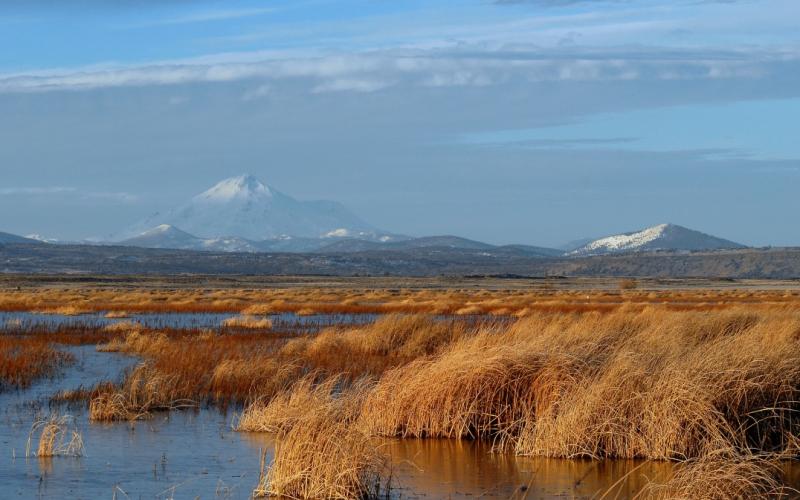
$162 million in Bipartisan Infrastructure Law funding will underpin programs and projects to restore habitat, control invasive species, conserve at-risk and listed species, and improve habitat connectivity for aquatic species around the country. For example, the objectives of the Klamath Basin Restoration Program include enhancing captive-rearing of Endangered Species Act-listed sucker species at the Klamath Falls National Fish Hatchery, addressing water quality and water quantity issues throughout the basin, and supporting projects that will help improve conditions for waterfowl and salmon and other native fish species throughout the basin.
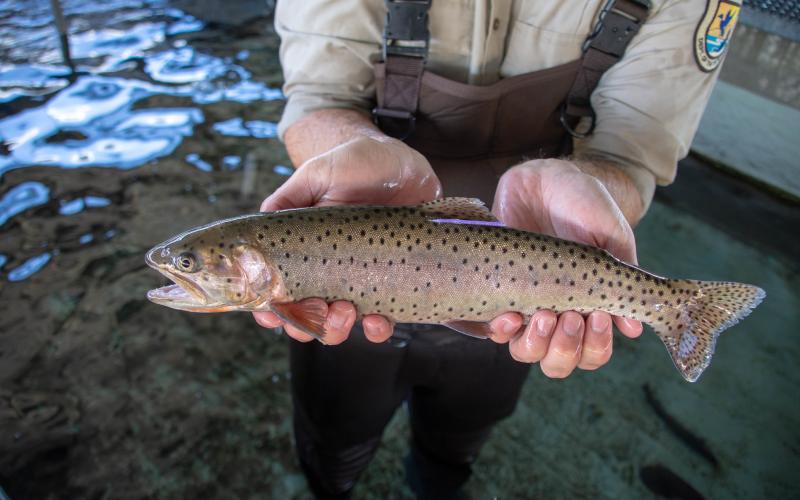 a spotted fish." width="800" height="500" />
a spotted fish." width="800" height="500" />
In continuing its work on Lake Tahoe restoration, Interior will deploy $17 million in Bipartisan Infrastructure Law funding to provide important capacity to control aquatic invasive species for the benefit of Lahontan cutthroat trout and other native species. The trout is a threatened species under the Endangered Species Act and is a recovery priority for the Service, Washoe Tribe, Pyramid Lake Paiute Tribe, and other federal and non-federal partners in the Lake Tahoe basin.
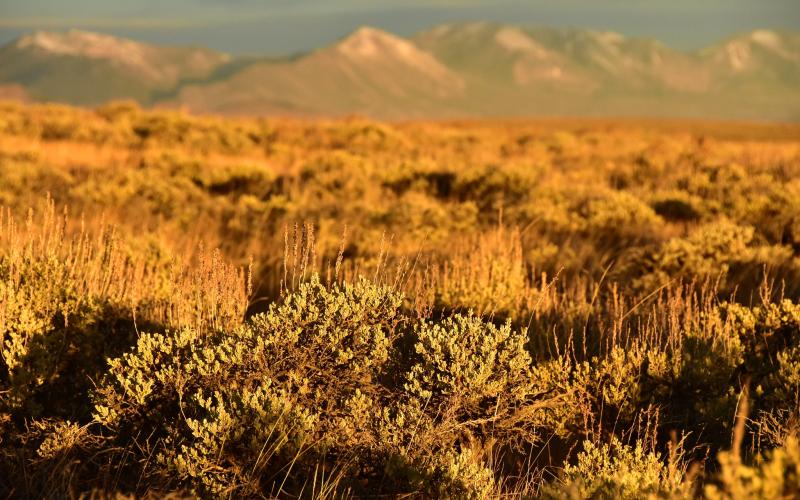
Big sagebrush is perhaps the most important shrub on western rangelands. Evergreen leaves provide an excellent winter food source to numerous species of large mammals, including mule deer, elk, and pronghorn. Photo by Tom Koerner, U.S. Fish and Wildlife Service.
$50 million in Bipartisan Infrastructure Law funds will also support the Fish and Wildlife Service’s work through the Sagebrush Ecosystem Team, which builds on an existing collaborative effort with public and private partners to conserve the sagebrush ecosystem of the American West and the nationally significant biological, cultural and economic resources it supports. Working across 13 western states and multiple jurisdictions, the partnership will use leading-edge science and a Strategic Habitat Conservation approach to identify the most pressing threats to a sustainable sagebrush ecosystem, such as invasive species and wildfire, and will invest in tangible, measurable actions to address those threats in the face of a changing climate.
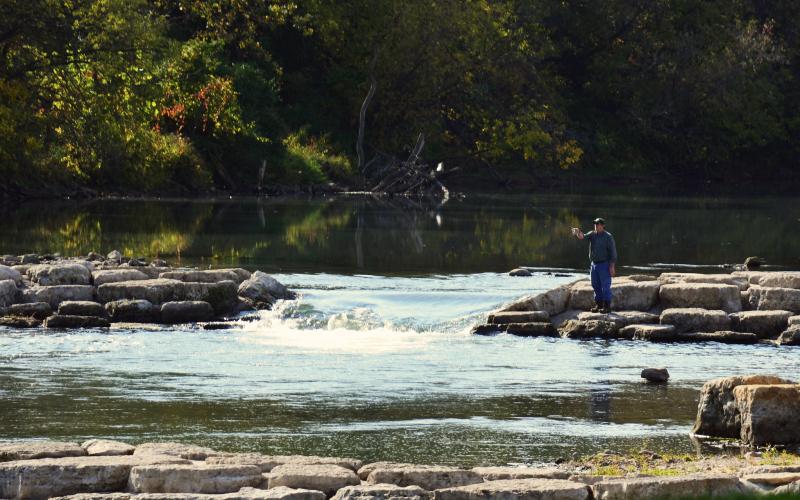
Stream rehabilitation has increased fish populations on the Maquoketa River in Manchester, IA. Photo by Mara Koenig, U.S. Fish and Wildlife Service.
$200 million from the Bipartisan Infrastructure Law will provide additional funding for the Fish and Wildlife Service’s National Fish Passage Program. The program’s work to restore degraded and fragmented aquatic habitats decreases public safety hazards and improves infrastructure resilience by reducing flood risks, removing obsolete dams, and improving water delivery for local agriculture irrigation districts. In turn, this work creates construction, engineering and other jobs, stimulating the local economy.